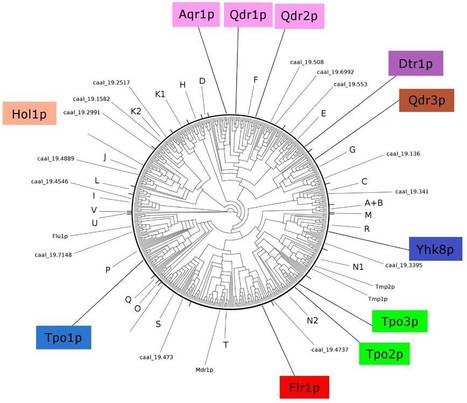Candida species colonize different body sites in healthy hosts but these yeasts are also opportunistic pathogens when an alteration in human microbial defenses occur. The high mortality rate of Candida bloodstream infections (candidemia) is related to their ability to develop resistance against multiple antifungal agents. In particular, two drug:H+ antiporters of family 1 (DHA1), Mdr1p and Flu1p, are known to underly the azole-resistance phenotype observed in many C. albicans clinical isolates.
In a recent paper published on the journal Genomics, iBB researchers of the Biological Sciences Research Group (BSRG) identified the whole set of DHA1 proteins encoded in the genomes of 31 hemiascomycetous strains, corresponding to 25 yeast species. Using phylogenetic tree building methodologies and comparative genomic approaches, the evolutionary history of the DHA1 encoding genes in the Hemiascomycetes was reconstructed, revealing that sixteen DHA1 lineages were conserved during pathogenic Candida species evolution. The evolution of C. albicans MDR1 and FLU1 genes and C. dubliniensis, C. tropicalis and C. parapsilosis MDR1 genes was detailed and gene duplication and loss were found to be major driving forces underlying the evolution of the DHA1 genes in Candida species.



 Your new post is loading...
Your new post is loading...







